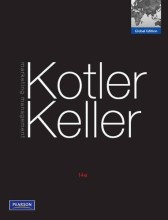Big data in Internet of Things
6 important questions on Big data in Internet of Things
What are the elements of IoT?
- Identification - unique identifier(ID)
- Sensing - e.g. Temperature sensors
- Communication - wireless or wired networks
- Computation - data processing
- Services - e.g. Data aggregation for collecting and summarizing raw sensing measurements
- Semantics - extract knowledge from raw data and provide required services
What is the difference between internet and internet of things?
- Internet: you sense things and communicate this to another person via the internet.
- IoT: a device senses something and communicates this via the internet to another device.
What are the key challenges of IoT?
- Reliability - proper working of the system.
- Mobility - services for mobile users.
- Scalability - increase the number of devices without negatively affecting performance.
- Security and privacy - data protection.
- Higher grades + faster learning
- Never study anything twice
- 100% sure, 100% understanding
How can you evaluate the performance of IoT?
- Processing speed
- Storage
- Communication (e.g robust, scalable, speed)
- Cost
- Maintenance (e.g size, power supply)
What is the architecture of IoT?
- Data layer: sensing, identification
- Network layer: communication
- Data processing layer: computation
- Application layer: services, semantics
What is a UML sequence diagram?
- Unified Modeling Language.
- A way to visualize a system.
- Depicts interactions between objects in a sequential order, i.e the order they take place in (top to bottom).
The question on the page originate from the summary of the following study material:
- A unique study and practice tool
- Never study anything twice again
- Get the grades you hope for
- 100% sure, 100% understanding































